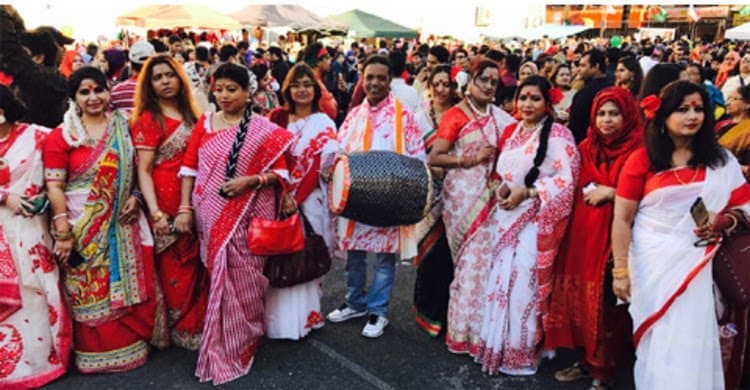Editor’s Note: KingsCountyPolitics.com and QueensCountyPolitics.com proudly introduces Bangladeshis-American Tofazzal Liton as our newest contributor. Liton is covering the vibrant and growing Bangladeshis-American community. Besides being a journalist, Tofazzal is an accomplished playwright and TV drama writer.
New Yorkers often notice ‘Made in Bangladesh’ tags or stitching on their clothes. They put their trust in it too. Nobody inquires about what services the struggling and hardworking citizens of this country are constantly providing for the residents of New York. But today, this community also has a minimum of 50,000 undocumented people too.

Bangladeshis are providing services to the city’s traffic, police, construction, education, medical, restaurants, taxis and small businesses. These people with distinct cultures are accelerating the progress of America. The second generation of Bangladeshis are growing up in the city. Most of them are now participating in the development of America with talent instead of physical work.
When the liberated man tastes freedom, he understands the meaning of true freedom. That is why the people of America declared their solidarity in the struggle for the independence of Bangladesh. With the birth of this nation on December 16, 1971, the 56,000 square miles of the country are being associated by the American people and the late Beatles singer George Harrison and 2016 Nobel Prize winner Bob Dylan.
Every day when you wake up, the first food that you make from fast food, tea, coffee or snacks is mixed with the affection of some or other Bangladeshi people; you don’t even have time to look at that woman or man of medium height and shape with brown skin color. When you don’t want to be out of your house in the snow and storm, there are some Bangladeshi people who deliver the food you like in your home. Hospitality is one of the most important characteristics of the Bangladeshi people, with great sincerity; at least 30,000 people are constantly serving you.
Yellow taxi cabs seem to be the hallmark of New York; it is impossible to travel in this city without cheap taxis, limousines and Uber type’s vehicles. When you are drunk or have no other options of getting into your car or subway, they become your only option. In response to your call or just a hand gesture, these TLC drivers take you to your destination. About 45 percent or about 35,000 humble people of the city’s taxi drivers are from Bangladesh.
Only sufferers know how important construction and housing are in this city. At least 20,000 Bangladeshis are working tirelessly on various streets of the city to build, renovate and rent these houses and offices. At least 3,000 Bangladeshi traffic agents are working tirelessly to control the traffic jam in New York City. Some of them have been promoted to supervisors, managers and detectives. About four hundred Bangladeshis are playing a courageous role in NYPD in controlling law and order in the city.

There are also a few university and college teachers, thousands more in the civil service and MTA. About a thousand Bangladeshis are providing services in the medical sector of the city. Among them, at least 300 doctors who are regularly seeing patients or work as doctors in different hospitals. The above amount of information has been collected from Pew Research and related professional Bangladeshi organizations.
This small group of people have at least a thousand organizations. Some of these are regional associations, and some are socio-cultural and political associations. Through these organizations, they maintain correlations between them and engage in conversation and gossip. Aside from family ties, one of the cultural characteristics of the Bangladeshi people is to keep people in kinship. Basically, despite coming in this country to earn their subsistence, in their heart and behavior, they hold the whole of Bangladesh. There are 17 printed newspapers & 5 news portals, 4 local TV in the community.
In the history of the world, these Bangladeshi people died at the hands of Pakistanis on February 21, 1952, to speak their mother tongue. International Mother Language Day was observed on February 21, 1997, with the recognition of UNESCO. Along with people from all over the world, Bangladeshis in New York also observe the day with respect. The Bangla Academy organizes the largest book fair in the country centering on Language Month. Muktodhara arranges a 3 days book fair in the community every year for the last 29 years. With great compassion, they celebrate the birthday of Father of the Nation Bangabandhu Sheikh Mujibur Rahman on March 17, Independence Day on March 26 and Victory Day on December 16.
Although 85 percent of Bangladeshis are Muslims and 10 percent are Hindus, everyone participates in festivals of all religions, including Buddhism and Christianity. The universal festival of Bangladeshi in that place Bengali nation, is Barshabaran (Bangla new year). This festival is celebrated on the first day of the Bengali calendar that is 14th April. On this day, men and women in colorful Bengali attire rallied in the streets of New York with masks of owls, kites, elephants, horses, plow, yokes and other traditional items. Men wear traditional lungi-dhoti, panjabi-fatwa and women wear white and red sari. Bangladeshis sang Bengali folk songs with drums, kholok, cymbal, ektara and dotara. They have been served with their traditional food such as plain rice, fish and vegetable curry with various types of mash and pulses. As usual, some people eat delicious biryani and meat curry.
If you want to see this unique Bengali nation and be fascinated by their hospitality, you can go to Jackson Heights, Jamaica and Astoria in Queens, along McDonald Avenbue ‘s area in New York. In Brooklyn, you will find them in the Charles Mcdonal, ozan Park and Newkar areas. In The Bronx they live in Parkchester . One of these areas is like a chunk of Bangladesh. If you go there, you can eat in a Bangladeshi restaurant, where you will find spicy foods. If you want, you can get traditional and exceptional Bangladeshi clothes out there.





